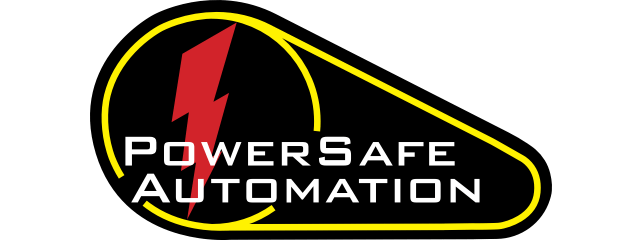Automated testing fixtures have emerged as a powerful solution to address this challenge. By integrating automated quality checks into the production line, manufacturers can detect defects early, maintain tolerances, and ensure every product meets specifications—without slowing down throughput. In this blog, we explore how automated testing fixtures improve product consistency and why investing in custom test fixtures is a game-changer for modern manufacturing operations.
What Are Automated Testing Fixtures?
Automated testing fixtures are precision-engineered mechanical or electromechanical devices designed to hold and test a component or assembly in a repeatable, hands-free manner. These fixtures are commonly used in production lines to validate physical dimensions, electrical characteristics, performance metrics, and more.
Rather than relying on manual measurements or subjective judgments, automated fixtures ensure every unit is subjected to identical test procedures under controlled conditions. The result? Reliable, repeatable, and highly consistent quality control.
Top Benefits of Automated Testing Fixtures for Product Consistency
1. Repeatability and Precision
One of the core strengths of automated testing fixtures is repeatability. These systems are built to apply the same test conditions to each part—down to the micron or millisecond—ensuring that variations are not introduced by human operators or environmental inconsistencies.
Whether it's applying uniform torque, measuring electrical resistance, or verifying sensor outputs, test fixtures help manufacturers maintain tight tolerances across large batches.
2. Reduced Human Error
Manual inspection and testing can be inconsistent and error-prone. Fatigue, distraction, and subjective judgment all introduce the potential for mistakes. Automated testing eliminates these variables by executing pre-programmed, objective testing procedures.
In industries like medical device manufacturing or aerospace, where a single faulty unit can have serious consequences, minimizing human error is essential.
3. Faster Quality Feedback
Automated testing fixtures provide real-time feedback to operators, engineers, and quality teams. If a part fails, the system can immediately signal rejection, stop the line, or log the failure for traceability.
This enables fast corrective action before issues propagate across batches—significantly improving First Pass Yield (FPY) and reducing scrap rates.
4. Integration with Data Logging and Traceability
Modern fixtures can be integrated with PLCs, MES systems, and quality databases to capture detailed test results for each unit. This traceability allows manufacturers to:
-
Monitor trends
-
Perform root cause analysis
-
Maintain compliance with quality standards like ISO 9001, IATF 16949, or FDA requirements
In regulated industries, this documentation is not only helpful—it’s often mandatory.
5. Scalability for High-Volume Production
Automated test fixtures are built to scale. Whether you're producing 100 units a day or 100,000, the same fixture can operate with minimal downtime or recalibration. This ensures that as your production ramps up, your product consistency remains rock solid.
Custom fixtures can even be designed for multiple part configurations, allowing quick changeovers and future-proofing your quality process.
Key Applications Where Consistency Is Critical
Electronics
In PCB or sensor manufacturing, testing continuity, voltage, and signal outputs with high precision is vital. Automated fixtures can verify solder joint integrity, connection reliability, and component orientation.
Automotive
Testing pressure sensors, brake modules, ignition systems, and even airbag controls requires tight tolerances. Automated test systems ensure performance and safety before installation in vehicles.
Medical Devices
Every syringe, catheter, or monitor must perform consistently. Fixtures used in this industry test flow rates, material strength, and electronics—all while maintaining cleanroom compliance.
Consumer Products
For high-volume products like appliances or wearables, maintaining consistency reduces return rates, increases brand trust, and supports warranty management.
Types of Automated Testing Fixtures
-
Mechanical Testing Fixtures: Used to measure physical parameters such as force, torque, compression, or material deformation.
-
Electrical Test Fixtures: Used to assess continuity, resistance, insulation, or current draw on PCBs and wiring harnesses.
-
Pneumatic or Hydraulic Fixtures: Used for pressure testing, fluid movement validation, and actuation confirmation.
-
Vision-Integrated Fixtures: Combine fixturing with machine vision systems to confirm correct assembly, labeling, and orientation.
-
Functional Testing Fixtures: Simulate end-use conditions to validate that a product performs as intended under real-world conditions.
Designing for Consistency: Why Custom Fixtures Make a Difference
Generic or off-the-shelf test fixtures often fall short in real-world production environments. A custom fixture—designed specifically for your parts, processes, and tolerances—offers superior alignment, ergonomic integration, and error-proofing.
At Power Safe Automation, our design team works alongside your engineers to understand the nuances of your products and build testing solutions that enhance consistency from the ground up.
Case Study Example:
Problem: A medical device manufacturer faced high rejection rates during post-assembly testing due to inconsistent manual checks of sensor calibration.
Solution: Power Safe Automation implemented a custom automated test fixture that measured calibration using a sensor probe and feedback loop, ensuring uniform conditions.
Results:
-
Reduced test time by 40>#/p###
-
Improved pass rate from 87% to 99.5>#/p###
-
Enabled traceable records for every unit
How Power Safe Automation Can Help
With years of experience in building custom testing and inspection fixtures, Power Safe Automation understands the intricacies of precision testing. We specialize in:
-
Mechanical and electrical test fixture design
-
Pneumatic and hydraulic integration
-
Sensor and feedback loop testing
-
PLC and HMI integration
-
Error-proofing and poka-yoke design
-
Scalable designs for growing production
Whether you’re launching a new product or refining an existing process, we help you engineer repeatability, accuracy, and throughput into your quality assurance system.
Why Product Consistency Is a Strategic Advantage
Beyond meeting spec sheets and passing audits, consistent quality builds your reputation. It reduces warranty costs, improves customer satisfaction, supports better pricing, and unlocks new markets. In many cases, it’s the key to moving from reactive quality control to proactive operational excellence.
Companies that invest in automation—not just for manufacturing but for quality testing—gain a competitive edge that compounds over time.
Conclusion
Product consistency is more than a goal—it’s a necessity in today’s fast-paced manufacturing world. Automated testing fixtures provide the tools to meet that challenge head-on, replacing variability with reliability, subjectivity with data, and slow feedback with real-time precision.
At Power Safe Automation, we build test fixtures that ensure every product that leaves your line is built to spec, every time.



